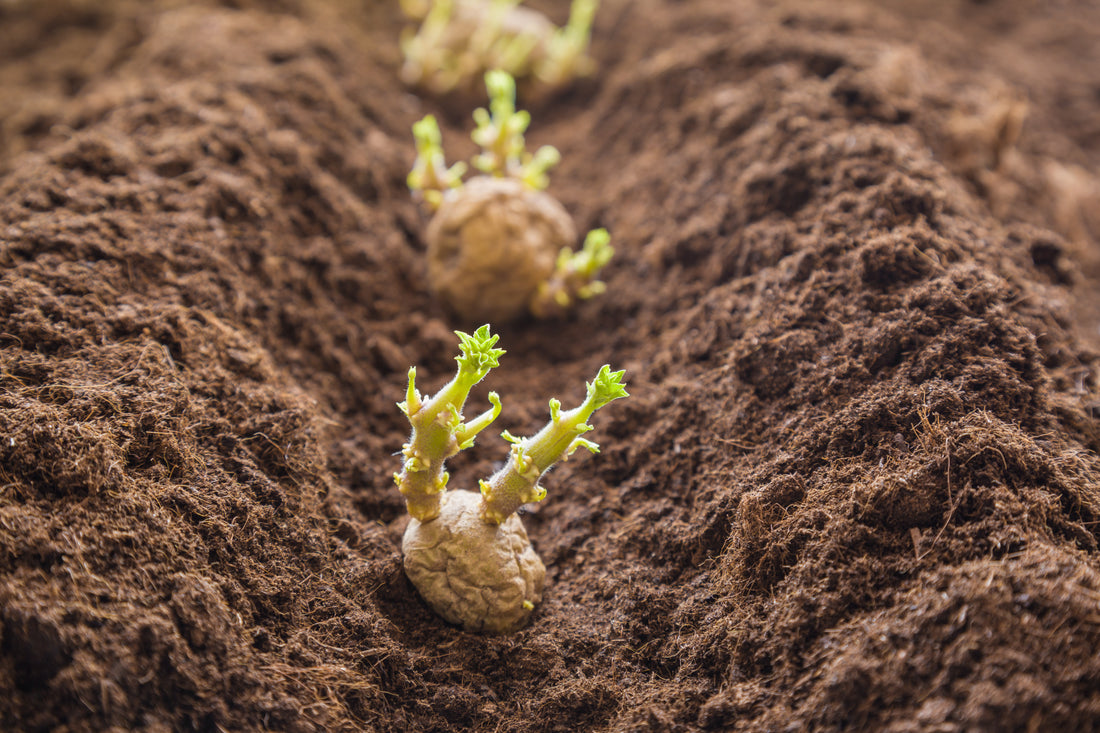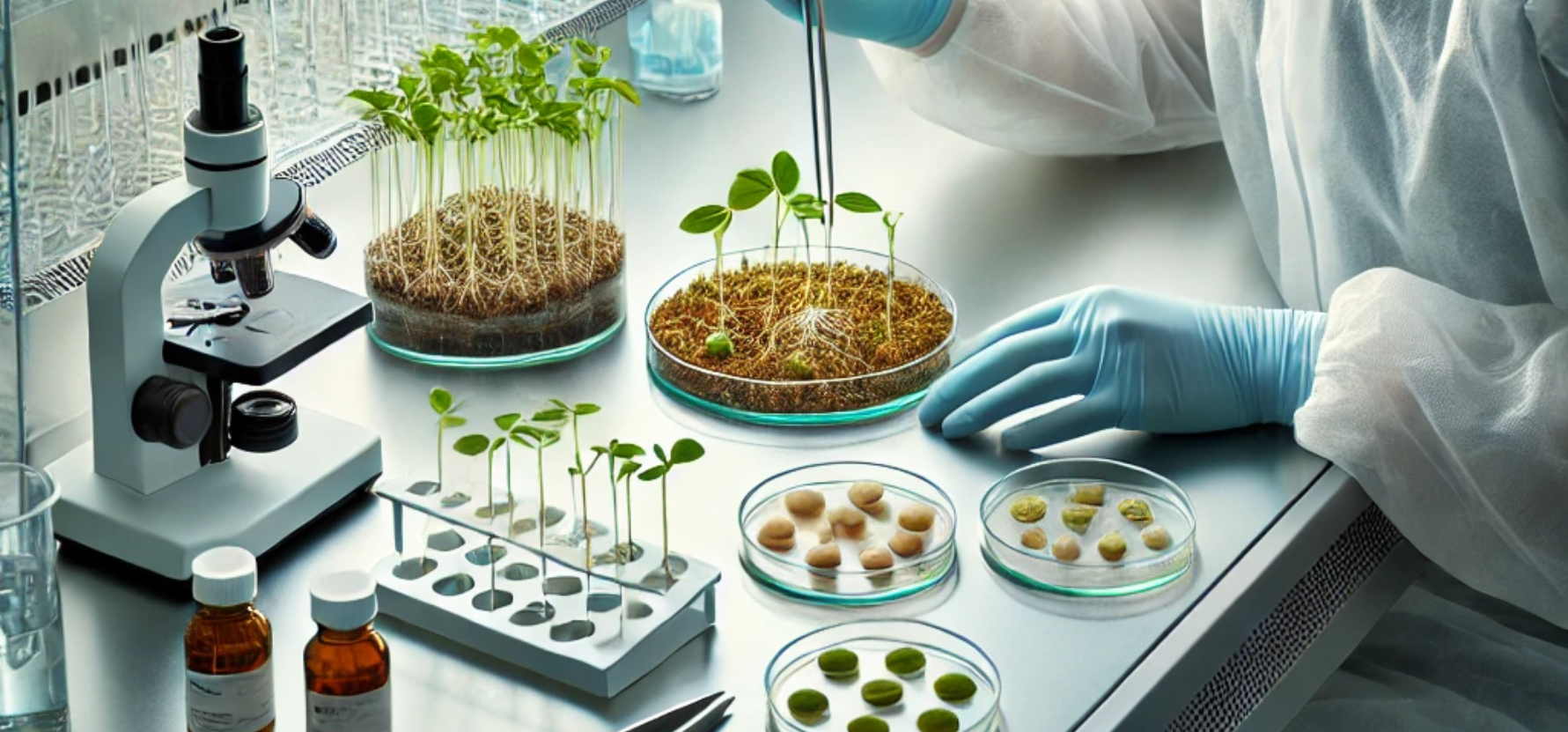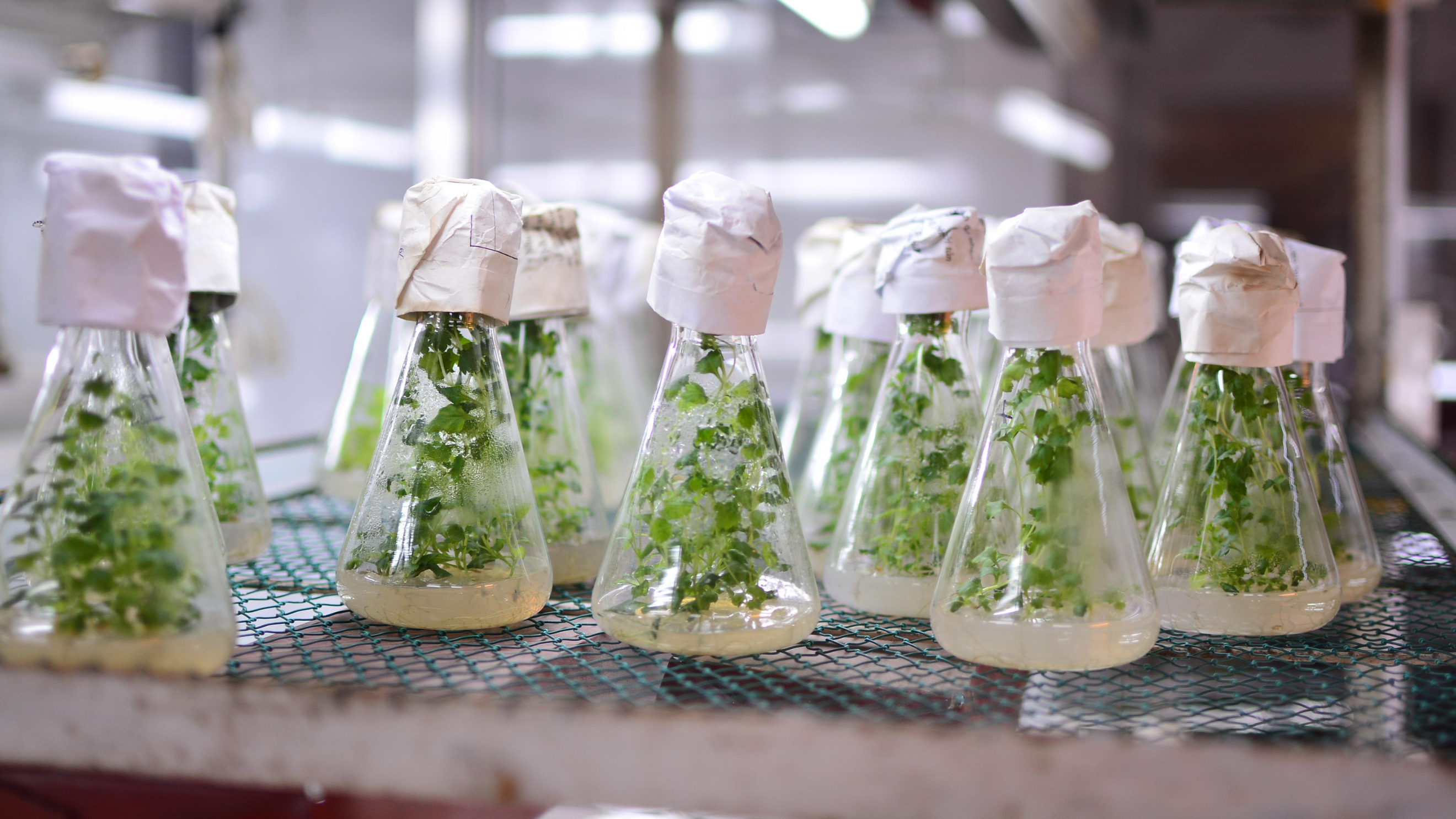
Tissue Culture of Potato (Part-2)
As a content and community manager, I leverage my expertise in plant biotechnology, passion for tissue culture, and writing skills to create compelling articles, simplifying intricate scientific concepts, and address your inquiries. As a dedicated science communicator, I strive to spark curiosity and foster a love for science in my audience.


INTRODUCTION
Potato (Solanum tuberosum) is one of the most widely grown food crops in the world. The edible part, tuber, is a modified underground stem that works as a nutrition reserve and means of reproduction.
Potatoes can be cultivated by two means: sexually and asexually. Sexual reproduction is done using true potato seed or botanical seed and asexual reproduction is by using tubers. But these conventional techniques have certain disadvantages.
Growing potato plants using seeds has a low rate of multiplication and a high risk of various diseases. Moreover, it’s a time-consuming, and labor-intensive process. When the plants are grown using tubers, they are true clones of the mother plant. However, they can carry pests and diseases that affect the tuber quality and yield of the harvest.
The advancement in science and technology has introduced the other alternative technique, tissue culture of plants, to the challenges of the conventional method. This article covers the application of different tissue culture techniques in growing potato plants.
In vitro micropropagation of Potato (Solanum tuberosum)
Tissue culture is an emerging and indispensable technology that has solved some severe issues related to agriculture and plant-based industries. Some of its advantages include:
- Regeneration of whole plants from a range of cultured tissues (roots. leaves. tubers. stems) and from single cells.
- Rapid and mass production of plants, which has made it possible to meet the ever-increasing demand for plants in commercial space.
- Producing plants with desirable characters.
- Producing disease-free plants.
- Producing plants in their non-favorable growth season.
- Conservation of endangered or extremely endangered species.
- Producing haploid plants.
The tissue culture technology offers new potential for potato breeding programs in multiple ways:
- To improve efficiency, some tissue culture techniques can be incorporated into breeding programs.
- The combination of tissue culture with conventional breeding methods can create the possibility of designing new effective breeding strategies.
- A new type of genetics can be applied by coupling the regeneration systems with the advancing technology of genetic engineering.
Now, let’s learn the tissue culture techniques with their application in successfully growing potatoes in the lab environment. The information given here is mostly taken from the study of “Karp, A., Jones, M. G. K., Ooms, G., & Bright, S. W. J. (1987). Potato Protoplasts and Tissue Culture in Crop Improvement. Biotechnology and Genetic Engineering Reviews, 5(1), 1–32. doi:10.1080/02648725.1987.1064783”
Tissue culture techniques to grow potatoes
1. Meristem Tip Culture for Virus Elimination
Potato is susceptible to many viral diseases, causing a gradual decrease in its vigor and yield. Meristematic is a proven technique to eliminate viruses and obtain disease-free plants.
The technique was tried by Mellor and Stace-Smith (1977) to obtain 136 virus-free potato cultivars. The steps followed by them are:
- Pretreat the potato shoots by growth at raised temperatures (32-37 ℃).
- Surface sterilizes the cut shoots.
- Excise the apical and axillary meristems (length 0.3-4.7 mm).
- Transfer the excised meristem to a filter paper bridge in a tube containing a liquid culture medium. (Musrahige and Skoog Culture media has been found to be most suitable to tissue culture potato plants)
- After culture at 20-25 ℃, when shoots emerge, they can be rooted and potted out.
- Then, test the treated plants for the presence of viruses.
2. Germplasm Storage
Culturing potatoes using axillary shoots is a convenient way to grow shoots and maintain them through subculturing for any tissue culture processes. They are also valuable means of keeping genetic stocks. The procedure for the micropropagation of potato plants for germplasm storage is given below:
- Surface sterilize the stem segments and culture them on standard agar media in the absence of growth regulators. or with low levels of cytokinin.
- When the shoots develop, they can be cut into nodal segments for subculturing.
(It’s been observed that a multiplication rate of about x l0 per month occurs under continuous light (6000-8000 Lux) at 25 ℃. In 18 weeks, over 500 plants can be obtained from sprouts from one medium-sized tuber.)
- After 3-4 months of culture, mini-tubers of 3-6 mm diameter may develop at the nodes.(On mini tuber per node can be obtained by culturing stems in short days on medium containing high benzylaminopurine (BAP) and sucrose levels (2.0 mg/l BAP, 6% sucrose).
- The cultured shoots will rapidly develop roots and then they can be transferred to the soil after washing off the agar.
The growth of potato cultures and the period of subculturing can be increased by growth at low temperature (e.g. 6-8 ℃) and low Light intensity, which require only annual subculturing.
3. Organ and Explant Culture
The regeneration of potato plants can be obtained by culturing organs like anther or from cultured explants of leaf, stem, rachis, and tuber. Here, the adventitious shoot regeneration is obtained through an intermediate callus stage, unlike the other two methods mentioned above.
Regeneration of potato plants using organ or explant is a two-step process (for monohaploid and dihaploid lines):
- Cell proliferation phase: It takes the duration of 2 weeks and requires the presence of auxin and cytokinin in the medium.
- Morphogenetic phase: Adventitious shoots appear on a medium containing cytokinin and gibberellic acid. Then, rooting can be induced by placing the shoots in a medium containing 0.06 mg/l naphthalene acetic acid (NAA).
4. Anther and Ovary Culture for Haploid Production
Anther and ovary cultures are suitable for haploid production. The factors that influence the anther culture of potatoes include background genotype, planting at the correct developmental stage (uninucleate microspores, i.e. flower buds 4-6 mm in length), pretreatment (e.g. incubation of flower buds at 6 ℃ for 48 hours), and the media components (e.g. sucrose 6%, activated charcoal 0.5%. BAP, 1 mg/l).
Other than anther and ovary culture, haploids can be obtained by parthenogenesis or chromosome elimination.
5. Protoplast cultures
Protoplast culture is important for direct genome manipulation by mutation, fusion, or transformation. To obtain a viable lead protoplast, it’s required to carefully control leaf growth conditions. Plants must either be grown in controlled-environment cabinets with specific light, nutrient and humidity regimes, or else as shoot cultures.
The steps to in vitro protoplast culture are followed as:
- After plasmolysis, release protoplasts d by enzymatic digestion of the cell wall.
- Protect the protoplasts from bursting out by providing a suitable osmotic environment.
- Wash and culture protoplasts in an appropriate medium which allows the synthesis of new cell walls followed by cell division.
- When the divided cells start being visible to naked eyes transfer them to a solid medium for callus formation.
- Then, transfer the callus to shooting media, followed by the transfer to rooting media for the root regeneration.
- The whole procedure of potato plant regeneration takes about 4-6 months.
Excel in Tissue Culture With Plant Cell Technology Products and Services
Tissue culture is a multistage process that requires a huge amount of time (lesser when compared to the conventional techniques), effort, and money. The bad product quality and tools can cause all of them to go in vain.
Plant Cell Technology helps you with this by providing you world-class tissue culture products and services at much affordable costs. Its trademark product “Plant Preservative Mixture (PPM)” provides all-round security and protection to your cultures from contaminants in their growth stages.
So don’t wait!
Excel in your tissue culture experiments with Plant Cell Technology now!
Happy Culturing!

Source: Giphy
Blog Categories
View by Level
Popular Blogs

What No One Tells You About Subculturing (Until It’s Too Late)
Introduction Subculturing is a crucial process in tissue culture. Why? Because it's responsible for multiplying a single small piece of...
Read More
The Future of Plant Cloning: What’s Next in Tissue Culture Innovation?
Introduction Plant cloning is the process of producing genetically identical copies of a parent plant. This results in offspring that...
Read MoreSubscribe to Our Newsletter







Join the conversation
Your email address will not be published. Required fields are marked